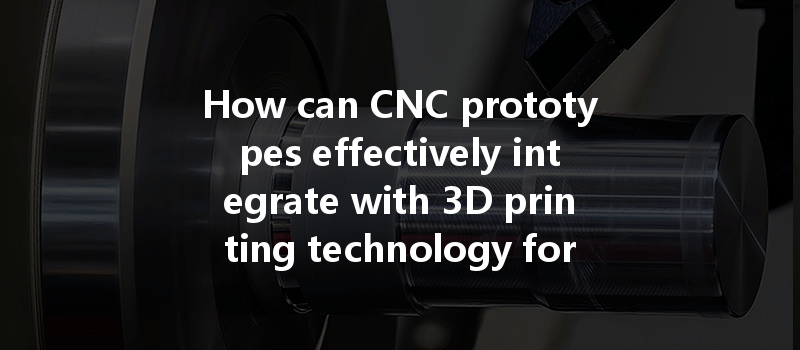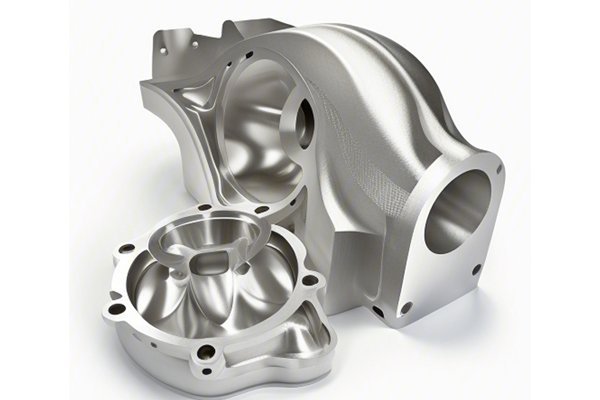: The Future of Manufacturing is Here
Did you know that the global additive manufacturing market, which includes 3D printing, was valued at over $15 billion in 2022 and is expected to grow to nearly $37 billion by 2026? This rapid growth diverges significantly from traditional manufacturing, where competitive pressures demand increased efficiency, reduced cost, and improved product quality. One of the most promising intersections of modern manufacturing technologies is the integration of CNC (Computer Numerical Control) machining and 3D printing.
As manufacturing industries strive for agility in production and innovation in product design, the combination of CNC prototypes and additive manufacturing technology opens new avenues for enhanced manufacturing solutions. This blog will delve into how CNC prototyping can effectively coordinate with 3D printing technology, resulting in significant advantages such as improved efficiency, reduced costs, and increased design flexibility.
The Landscape of Manufacturing: An Overview
Before we explore the integration of these two technologies, it’s crucial to understand the core principles behind each:
CNC Machining: This subtractive manufacturing process involves the use of computer-controlled tools to remove material from a solid block (or “workpiece”) to create a part or product. CNC machining is known for its high precision, repeatability, and ability to work with a wide variety of materials, including metals, plastics, and composites.
3D Printing: Also known as additive manufacturing, this process builds objects layer by layer from a digital model. Unlike subtractive methods, 3D printing adds material to create prototypes from materials like plastics, metals, ceramics, and even biological materials. It is especially popular for rapid prototyping due to its ability to produce complex geometries that are difficult or impossible to achieve with CNC machining.
The combination of CNC machining and 3D printing offers various benefits that can drastically enhance production capabilities. Here are several ways these technologies can work together:
A. Creating Complex Geometries
One of the most significant advantages of 3D printing is its ability to produce intricate and complex shapes that may be challenging to achieve with CNC machining alone. By using 3D printing to create initial prototypes or parts with complex geometries, manufacturers can then employ CNC machining to refine these designs and add precision features.
B. Rapid Prototyping and Iteration
In product development, speed is essential. 3D printing allows for rapid prototyping, facilitating quick iterations of designs. After testing and feedback from initial prototypes, CNC machining can be utilized to refine the prototypes into final versions that meet required tolerances and specifications more accurately.
C. Tooling and Fixtures Production
Using a hybrid approach, manufacturers can 3D print bespoke tooling and fixtures before CNC machining the final product. This capability reduces lead times while allowing for highly customized support structures to improve machining accuracy and performance.
Incorporating CNC prototypes with 3D printing can lead to various real-world applications across diverse industries:
A. Aerospace Industry
In the aerospace sector, where weight reduction is critical, integrating these technologies can significantly enhance manufacturing processes. 3D printing enables the creation of lightweight structures with complex internal geometries, whereas CNC machining offers the precise finishing necessary for safety-critical components like brackets, housings, and engine parts.
B. Automotive Industry
The automotive industry is rapidly adopting both CNC machining and 3D printing technologies. Rapid prototyping allows automotive manufacturers to quickly develop parts, which traditional manufacturing setups might find time-consuming. CNC machining is then used to create durable, high-performance components that meet regulatory standards.
C. Medical Devices
Medical device manufacturing requires strict adherence to regulations, as well as high precision and quality. Combining CNC machining with 3D printing enables customized and patient-specific solutions, such as prosthetics and implants, where prototypes can be quickly printed, tested, and refined before mass production.

While the benefits are substantial, several challenges must be addressed for effective integration:
A. Material Compatibility
Understanding the compatibility of materials used in CNC machining and 3D printing is critical. Not all materials used in additives are suitable for CNC processes. It’s essential to select appropriate materials that can withstand machining and maintain desired properties after processing.
B. Process Synchronization
The workflow between 3D printing and CNC machining needs to be carefully synchronized. A lack of alignment could result in delays or mismatches during prototyping and production phases, impacting overall project timelines.
C. Design Considerations
Designing for both manufacturing technologies necessitates consideration of various factors such as substrate material, the complexity of parts, and possible tooling needs. Designers must be adept at creating models that take full advantage of both methodologies.
To better understand the practical application of integrating CNC prototypes with 3D printing, let’s explore a couple of successful case studies:
A. Company X: Aerospace Part Production
Company X faced challenges in producing complex aerospace components. By adopting a hybrid manufacturing approach using 3D printing for prototype creation and CNC machining for final precision work, the company not only reduced part design time by 40% but also improved overall production efficiency by 30%.
B. Company Y: Medical Device Innovations
In a bid to develop a new line of implants, Company Y utilized 3D printing to create initial models, which were then refined via CNC machining. This streamlined approach allowed them to go from concept to a market-ready product in just eight weeks, a fraction of the usual time.
As we look to the future, the integration of CNC machining and 3D printing technology will likely continue to evolve. Future trends may include:
A. Advances in AI and Machine Learning
AI and machine learning may drive smarter design and production processes, making it easier to optimize CNC machining and 3D printing for faster, more efficient workflows.
B. Development of New Materials
As research further develops both CNC machining and 3D printing, we can anticipate new materials that can be used across both methods, offering enhanced properties and performance metrics.
C. Greater Usability of Hybrid Manufacturing Systems
Emerging technologies are expected to facilitate more seamless integration of these systems, allowing manufacturers to transition between 3D printing and CNC machining with greater ease.
: Embracing the Future of Manufacturing
As we’ve discussed throughout this blog, integrating CNC prototypes with 3D printing technology provides a multitude of benefits that manufacturers can leverage to remain competitive in a fast-paced market. From realizing complex designs to expediting prototyping and enhancing product finishes, the synergy between CNC machining and additive manufacturing is nothing short of revolutionary.
Understanding how to efficiently apply these techniques will undoubtedly contribute to operational excellence. As the manufacturing landscape continues to evolve, staying attuned to these innovations is critical for companies looking to optimize their production processes, reduce costs, and stay at the forefront of technological advancements.
Reflect on the advantages offered through this integration, consider how your business could implement these strategies, and take the first steps towards embracing the future of manufacturing technology. The potential is limitless, and the time to act is now.






